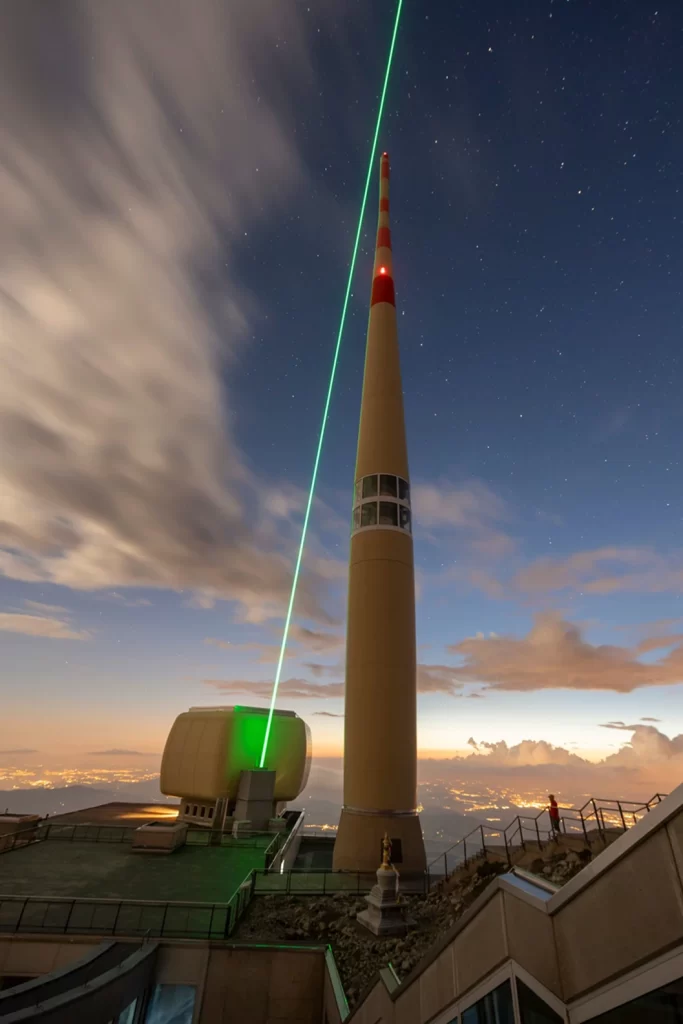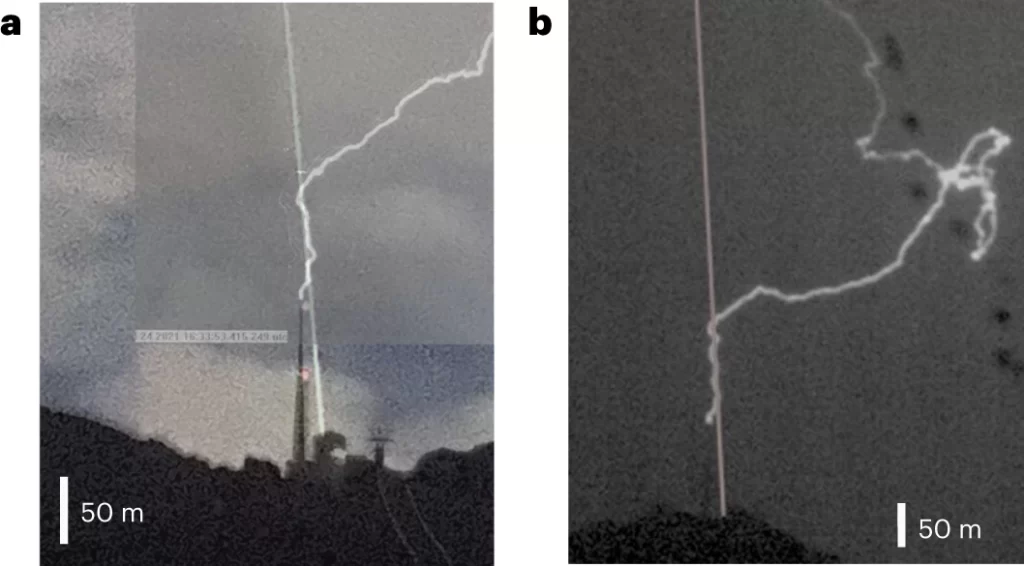In any case, the researchers thought this time might be different for a key reason: Lasers have improved considerably. They’re now able to fire much more rapidly; the one set up for this work is capable of a 1 kiloHertz frequency. That is a firing rate over 100 times larger than any laser used for this sort of work previously. Models that include this rapid cycling, the researchers show, suggest it creates a more persistent filament of charged particles in the air.

And it worked. Over six hours of testing, the tower saw four strikes while the laser was active. Imaging of one of these, which occurred in a clear sky, clearly shows the lightning bolt moving along the path defined by the laser until it reached the tower.
Laser Guided Lightning
A method to initiate lightning discharges with a small rocket trailing a long, grounded conducting wire was demonstrated by Newman et al. in 1965 (ref. 4). In contrast to the classical lightning rod, which is intended to be struck by lightning that approaches the protected structure, the rocket-and-wire technique is intended to trigger lightning artificially.

Rapidly inserting a wire into the strong electric fields near the ground below a thundercloud results in a field at the tip of the wire sufficiently enhanced to produce electrical breakdown. If the small rocket is fired at the right moment when conditions for lightning are met, this method can initiate lightning with a success rate of up to 90% (ref. 5). However, it requires expendable rockets and wires, the falling debris of which presents a danger.
In our experimental campaign performed during the summer of 2021, a Yb:YAG laser emitting pulses of picosecond duration and 500 mJ energy at a wavelength of 1,030 nm and at 1 kHz repetition rate28 was installed in the vicinity of a 124-m-tall telecommunications tower located on top of the Säntis mountain in north-eastern Switzerland (see refs. 29, 30, Methods, and Extended Data Figs.
1 and 2 for a description of the experimental set-up). This tower, which is struck by lightning about 100 times a year, is equipped with multiple sensors to record the lightning current, electromagnetic fields at various distances, X-rays and radiation sources from the lightning discharges (see refs. 31,32,33,34 for a detailed description of the lightning instrumentation).
The laser pulses were directed upward, with a propagation path passing in the vicinity of the tip of the tower, which is equipped with a Franklin rod (see Fig. 1). Relying on the results of a preliminary horizontal propagation campaign in laboratory, the laser conditions were adjusted so that initiation of filamentary behaviour started close to, but above the tip of the tower, and had a length of at least 30 m.
Laser system
The laser system operating during the campaign—fully described in ref. 28—is a Yb:YAG Chirped pulse amplification laser system developed by TRUMPF Scientific Lasers. It is capable of delivering laser pulses at 1,030 nm with 720 mJ of energy per pulse, a pulse duration of 920 fs at a repetition rate of 1 kHz.
Due to the configuration of our set-up, which features a long propagation before the sending telescope, the output energy was reduced to 500 mJ and the pulse was chirped to a pulse duration of 7 ps to prevent damage to the optics. In Extended Data Fig. 1b, an lithium triborate crystal46 was used to produce a beam at the second harmonic at 515 nm wavelength.
Source: https://www.nature.com/






